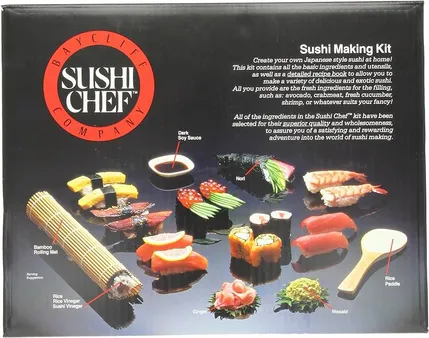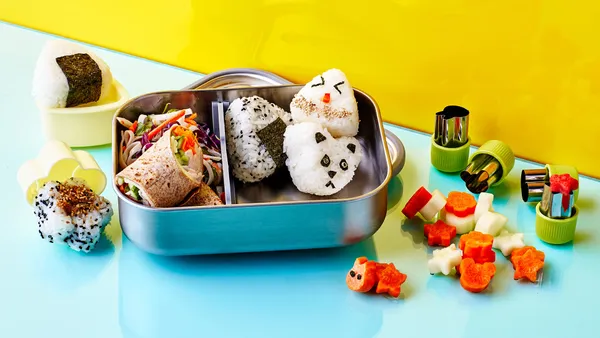Table of Contents
Embark on a culinary adventure with Tauhuichiban as we delve into the essential ingredients and tools you need to master the art of Japanese cooking. From the pantry staples to the specialized tools, we'll guide you through everything you need to create authentic and flavorful Japanese dishes in the comfort of your own kitchen. Whether you're a seasoned home cook or just starting your Japanese cooking journey, this comprehensive guide will provide you with the knowledge and resources to elevate your culinary skills and impress your family and friends with delicious Japanese meals.

The Ingredients and Tools You Need for Japanese Cooking
I. Essential Ingredients for Japanese Cooking
Japanese cuisine is renowned for its delicate flavors, fresh ingredients, and meticulous presentation. Whether you're a seasoned home cook or just starting out, having the right ingredients is essential for creating authentic and flavorful Japanese dishes. This guide will introduce you to the fundamental ingredients and pantry staples you need to embark on your Japanese cooking journey.
Pantry Staples
- Soy sauce: A versatile condiment made from fermented soybeans, water, salt, and wheat.
- Mirin: A sweet rice wine used for adding sweetness and glazing.
- Sake: A Japanese rice wine used in cooking for its umami flavor.
- Rice vinegar: A mild vinegar made from fermented rice, used for dressings and marinades.
- Dashi: A flavorful stock made from kelp and bonito flakes, used as a base for soups, sauces, and stews.
Produce
- Rice: The staple grain of Japanese cuisine, served with almost every meal.
- Seaweed: Various types of seaweed, such as nori, kombu, and wakame, are used in soups, salads, and sushi.
- Mushrooms: Shiitake, enoki, and oyster mushrooms are commonly used in stir-fries, soups, and tempura.
- Tofu: A versatile soybean-based protein used in a wide range of dishes.
- Green onions: Used as a garnish and flavoring in many dishes.
Proteins
- Fish: Fresh fish, such as salmon, tuna, and mackerel, is a staple in Japanese cuisine.
- Shellfish: Shrimp, clams, and oysters are often used in soups, stews, and sushi.
- Meat: Wagyu beef is highly prized for its tenderness and flavor, while pork and chicken are also commonly used.
- Eggs: Used in omelets, tempura, and various other dishes.
- Natto: Fermented soybeans with a sticky texture and strong flavor.
Seafood
- Sushi rice: A special type of short-grain rice used in making sushi.
- Nori: Dried seaweed sheets used for wrapping sushi rolls.
- Wasabi: A green paste made from Japanese horseradish, used as a condiment.
- Gari: Pickled ginger, served with sushi to cleanse the palate.
- Sashimi: Thinly sliced raw fish or seafood, served with soy sauce and wasabi.
Japanese Sauces and Seasonings
- Tonkatsu sauce: A thick, sweet and savory sauce used on breaded and fried dishes.
- Yakitori sauce: A sweet and salty sauce used for grilling chicken skewers.
- Teriyaki sauce: A sweet and savory sauce made from soy sauce, mirin, and sugar.
- Miso: A fermented soybean paste used in soups, marinades, and sauces.
- Shichimi togarashi: A spicy seven-spice blend used as a condiment.

Essential Ingredients for Japanese Cooking
II. Indispensable Tools for Japanese Cuisine
Making authentic Japanese dishes at home requires more than just the right ingredients. The right tools can make all the difference in creating dishes that are not only delicious but also visually appealing.
Knives
A sharp knife is essential for preparing Japanese ingredients. A good chef's knife will allow you to make precise cuts, which is important for techniques like slicing sashimi and cutting vegetables for tempura. A paring knife is also useful for smaller tasks, such as peeling ginger and蒜.
| **Type of Knife** | **Purpose** ||---|---|| Chef's Knife | All-purpose knife for chopping, slicing, and dicing || Paring Knife | Small knife for peeling, slicing, and other delicate tasks || Nakiri Knife | Vegetable knife with a flat blade for slicing vegetables || Sashimi Knife | Long, thin knife for slicing sashimi || Usuba Knife | Single-bevel knife for slicing sashimi and other delicate ingredients |
Cutting Boards
A good cutting board is another essential tool for Japanese cooking. A large cutting board will provide you with plenty of space to work, and a non-slip surface will help to keep your board in place while you're chopping. Bamboo and plastic cutting boards are both popular choices for Japanese cooking.
Pots and Pans
The type of pots and pans you use will depend on the dishes you're making. A heavy-bottomed pot is ideal for cooking rice, while a non-stick pan is a good choice for stir-frying. A steamer is also essential for cooking dishes such as steamed fish and vegetables.
Other Essential Tools
In addition to the basic tools listed above, there are a few other essential tools that can be helpful for Japanese cooking. These include:
- A mortar and pestle for grinding spices and ingredients
- A bamboo sushi mat for making sushi rolls
- A rice cooker for cooking perfect rice
- A tea kettle for making tea
- Serving bowls and plates for presenting dishes
Tool | Purpose |
|---|---|
Mortar and Pestle | Grinding spices and ingredients |
Bamboo Sushi Mat | Making sushi rolls |
Rice Cooker | Cooking perfect rice |
Tea Kettle | Making tea |
Serving Bowls and Plates | Presenting dishes |

Indispensable Tools for Japanese Cuisine
III. Tips for Selecting High-Quality Ingredients
Choose Fresh Produce
When selecting produce, look for items that are firm, brightly colored, and free of blemishes. Avoid produce that is bruised, wilted, or has signs of spoilage.
Read Food Labels Carefully
Pay attention to the ingredient list and nutritional information on food labels. Look for products that are made with whole, unprocessed ingredients and avoid those that contain added sugars, unhealthy fats, or artificial additives.
Buy Organic When Possible
Organic produce is grown without the use of pesticides, herbicides, or other synthetic chemicals. While organic produce may be more expensive than conventionally grown produce, it is worth the investment for the health benefits.
Support Local Farmers
Buying produce from local farmers is a great way to get fresh, seasonal produce while supporting your community. Visit farmers' markets or join a community-supported agriculture (CSA) program to connect with local farmers and get access to their products.
Store Food Properly
Proper storage is essential for maintaining the quality of your ingredients. Store fruits and vegetables in the refrigerator or in a cool, dark place. Meat and poultry should be refrigerated or frozen to prevent spoilage.
Use High-Quality Spices and Herbs
Spices and herbs can add flavor and depth to your dishes. Choose high-quality spices and herbs that are fresh and flavorful. Avoid using pre-ground spices, as they lose their flavor over time.
Experiment with Different Ingredients
Don't be afraid to experiment with different ingredients to find what you like best. There are many different ways to cook Japanese food, so don't be afraid to try new things.

Tips for Selecting High-Quality Ingredients
IV. Techniques for Using Japanese Cooking Tools
Japanese cooking tools are made to make cutting, preparing, cooking, and serving Japanese cuisine more convenient. And using these tools correctly can help you achieve the best results from your cooking.
Here are some tips for using Japanese cooking tools:
Tool | Techniques |
|---|---|
Knife | The knife is the most important tool in any kitchen, and it's especially important in Japanese cooking, where the goal is to cut ingredients cleanly and evenly. Japanese knives are made from high-carbon steel, which makes them very sharp. It is essential to keep your knife sharp, so be sure to hone it regularly. |
Cutting Board | The cutting board is another essential tool for Japanese cooking. It provides a stable surface for cutting ingredients, and it also helps to protect your countertop from damage. Japanese cutting boards are typically made from wood, which is a durable and non-porous material. |
Pots and Pans | Japanese pots and pans are designed for specific cooking techniques. For example, Japanese woks are used for stir-frying, and Japanese rice cookers are used for cooking rice. When choosing pots and pans for Japanese cooking, it's important to consider the size and shape of the pan, as well as the material it's made from. |
By following these tips, you can use Japanese cooking tools safely and effectively to create delicious and authentic Japanese meals.

Techniques for Using Japanese Cooking Tools
V. Conclusion
With the right ingredients and tools, you can create authentic and delicious Japanese dishes in your own home. Japanese cooking is a rewarding and enjoyable experience, and we encourage you to explore the flavors and techniques of this beloved cuisine. So gather your ingredients, sharpen your knives, and embark on a culinary adventure that will transport you to the vibrant streets of Tokyo or the serene countryside of Kyoto.